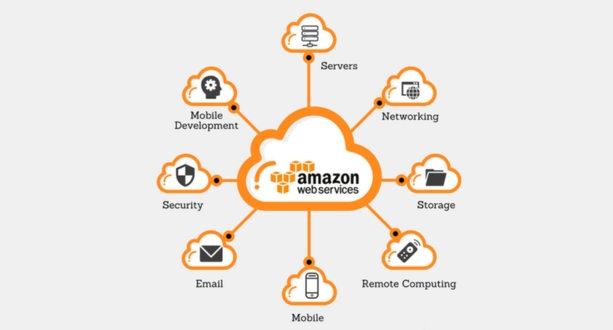Introduction
In the ever-evolving landscape of modern IT, AWS Cloud Networking stands as a fundamental pillar, transforming the way organizations manage and operate their infrastructures. This introduction delves into the definition, significance, and overarching impact of cloud networking, with a focus on AWS as a leading solution provider.
Definition and Significance of Cloud Networking
Cloud networking, at its core, is the practice of utilizing cloud-based infrastructure and services to manage, process, and transmit data over a network. It represents a paradigm shift from traditional on-premises networking models, offering scalability, flexibility, and cost-effectiveness. In the context of AWS, cloud networking leverages a wide array of services and tools to create, manage, and optimize the network infrastructure.
The significance of cloud networking lies in its ability to empower businesses with dynamic, on-demand, and highly scalable network resources. It transcends physical limitations, allowing organizations to transcend geographical boundaries and access resources from virtually anywhere. This scalability is pivotal in accommodating the fluctuating demands of modern businesses, providing a robust foundation for growth and innovation.
Overview of AWS as a Cloud Networking Solution Provider
Amazon Web Services (AWS) has emerged as a global leader in cloud computing, offering a comprehensive suite of services that extend to cloud networking. AWS provides a vast and interconnected ecosystem of services, enabling users to build, manage, and optimize their networks in the cloud.
AWS’s Virtual Private Cloud (VPC) serves as a cornerstone in cloud networking, offering a secure and isolated environment where users can launch resources such as instances, databases, and storage. AWS Direct Connect and Virtual Private Network (VPN) solutions facilitate secure connections between on-premises data centers and AWS, ensuring seamless integration.
Importance of Robust Cloud Networking in Modern IT
In the dynamic landscape of modern IT, where agility and responsiveness are paramount, robust cloud networking plays a pivotal role. It allows organizations to adapt to changing demands, scale resources efficiently, and enhance overall operational efficiency.
The importance of robust cloud networking is underscored by its impact on various aspects of IT operations, including:
- Scalability: Cloud networking enables organizations to scale their infrastructure up or down based on demand, ensuring optimal resource utilization without the constraints of physical hardware.
- Flexibility: AWS offers a diverse set of networking tools and services, allowing users to tailor their network configurations to meet specific requirements. This flexibility is crucial for accommodating diverse workloads and use cases.
- Cost-Efficiency: With pay-as-you-go pricing models and the ability to optimize resource usage, AWS cloud networking provides a cost-effective solution compared to traditional networking models. Organizations can align their spending with actual usage and demand.
- Security and Compliance: AWS prioritizes security, offering features such as Security Groups, Network ACLs, and encryption to safeguard data. Additionally, compliance with industry standards and regulations is addressed, providing a secure environment for sensitive workloads.
As organizations embark on their cloud journey, understanding and harnessing the power of AWS Cloud Networking becomes essential for unlocking the full potential of cloud computing. This series will delve deeper into specific aspects of AWS Cloud Networking, providing actionable insights for IT professionals and decision-makers alike.
AWS VPC (Virtual Private Cloud) Fundamentals
Understanding VPC Basics
Amazon Virtual Private Cloud (VPC) forms the backbone of AWS Cloud Networking, providing a customizable and isolated network environment within the cloud. It allows users to launch AWS resources, such as instances and databases, in a logically isolated section of the AWS Cloud. Understanding the basics of VPC is essential for creating a robust and secure network infrastructure.
A VPC is defined by its IP address range, which users can select based on their specific requirements. This address range is divided into subnets, and each subnet can be associated with a particular Availability Zone, providing high availability and fault tolerance.
Key components and concepts within VPC include:
- Route Tables: Controlling the traffic leaving the subnets by specifying routes.
- Internet Gateways: Enabling communication between instances in VPC and the internet.
- Elastic IP Addresses: Static IP addresses designed for dynamic cloud computing.
By comprehending these foundational elements, users can design VPCs tailored to their organizational needs, balancing considerations of security, availability, and scalability.
Subnetting and IP Address Management
Effective subnetting and IP address management are crucial aspects of VPC design, contributing to optimal resource allocation and network efficiency. Subnetting involves dividing the IP address range of a VPC into smaller sub-ranges, each assigned to a specific subnet.
Considerations for subnetting and IP address management in VPCs include:
- CIDR Blocks: Choosing and allocating CIDR blocks appropriately to ensure efficient IP address usage.
- Public and Private Subnets: Designing subnets to differentiate between resources that need direct internet access (public subnets) and those that should remain private (private subnets).
- IP Address Assignment: Managing IP address assignments to instances, ensuring a coherent and organized network structure.
By implementing effective subnetting strategies, organizations can enhance security, streamline network traffic, and facilitate the efficient deployment of resources within their VPC.
Security Groups and Network ACLs in VPCs
Security is paramount in cloud networking, and VPCs provide two primary tools for implementing robust security measures: Security Groups and Network Access Control Lists (ACLs).
- Security Groups: Act as virtual firewalls for instances within a VPC, controlling inbound and outbound traffic based on user-defined rules. They are stateful, meaning if you allow inbound traffic, the corresponding outbound traffic is automatically allowed.
- Network ACLs: Operate at the subnet level and function as a network-level firewall. Unlike Security Groups, Network ACLs are stateless, requiring explicit rules for both inbound and outbound traffic.
Understanding the intricacies of Security Groups and Network ACLs empowers users to enforce granular security policies, control access to resources, and fortify the overall integrity of their VPC.
In essence, mastering the fundamentals of AWS VPC lays the groundwork for creating a secure, flexible, and scalable cloud network.
Direct Connect and VPN Solutions
Establishing Secure Connections to AWS
Ensuring secure and reliable connectivity to AWS resources is paramount for organizations leveraging cloud services. AWS offers two primary solutions for establishing such connections: AWS Direct Connect and Virtual Private Networks (VPNs).
- AWS Direct Connect: This dedicated network connection provides a private, high-bandwidth link between an organization’s on-premises data center and AWS. By establishing a direct physical connection, users can achieve lower latency, increased reliability, and enhanced security compared to standard internet connections.
- Virtual Private Networks (VPNs): AWS supports various VPN options, including Site-to-Site VPN and Client VPN. Site-to-Site VPN enables secure communication between on-premises networks and AWS, extending an organization’s data center into the cloud. Client VPN, on the other hand, allows individual users to securely connect to AWS resources from remote locations.
Choosing between Direct Connect and VPNs depends on factors such as data transfer requirements, security considerations, and cost implications. Organizations often opt for Direct Connect for large-scale, consistent data transfers with stringent performance and security needs, while VPNs offer flexibility and cost-effectiveness for more sporadic or remote connectivity.
AWS Direct Connect vs. VPNs: Choosing the Right Solution
Understanding the nuances of AWS Direct Connect and VPNs is crucial for making informed decisions based on specific use cases and requirements.
- Considerations for Direct Connect:
- Performance: Direct Connect provides consistent, low-latency performance, making it ideal for applications demanding high-speed, reliable connections.
- Data Transfer Volume: Organizations with substantial data transfer volumes may find Direct Connect more cost-effective than relying solely on VPNs.
- Considerations for VPNs:
- Flexibility: VPNs offer more flexibility for organizations with varying connectivity needs, making them suitable for intermittent or remote access scenarios.
- Cost: VPNs are often a cost-effective choice for smaller organizations or those with less predictable data transfer patterns.
It’s essential to weigh these considerations against the specific requirements of the organization, factoring in elements such as data sensitivity, application performance, and budget constraints.
Best Practices for Network Connectivity
Implementing best practices ensures that AWS Cloud Networking solutions deliver optimal performance, security, and reliability.
- High Availability: Design network architectures for high availability by distributing resources across multiple Availability Zones.
- Security Measures: Implement security measures, including encryption, regular audits, and access controls, to safeguard data in transit and at rest.
- Monitoring and Optimization: Utilize AWS monitoring tools to gain insights into network performance and proactively address potential issues. Continuously optimize network configurations based on usage patterns and evolving requirements.
By adhering to these best practices, organizations can create a robust network infrastructure that aligns with their business objectives and effectively harnesses the capabilities of AWS Direct Connect and VPN solutions.
Load Balancing in AWS
Introduction to AWS Load Balancers
Load balancing is a crucial component of modern cloud architectures, distributing incoming traffic across multiple servers to enhance availability, fault tolerance, and scalability. AWS offers a range of load balancing solutions designed to meet diverse application requirements.
Elastic Load Balancer (ELB) Features and Use Cases
Elastic Load Balancer (ELB) is a fully managed service provided by AWS to automatically distribute incoming application traffic across multiple targets, such as Amazon EC2 instances, containers, and IP addresses. ELB supports three main types:
- Application Load Balancer (ALB):
Features:
- Operates at the application layer (Layer 7) of the OSI model, making it suitable for routing based on content.
- Supports routing decisions based on content, enabling more granular control over traffic.
- Works well with modern application architectures, including microservices and containerized applications.
Use Cases:
- Ideal for web applications that require flexibility in routing and support for multiple domains.
- Well-suited for scenarios where content-based routing or SSL termination is necessary.
- Network Load Balancer (NLB):
Features:
- Operates at the transport layer (Layer 4) of the OSI model, providing low-latency, high-throughput performance.
- Supports TCP, UDP, and TLS protocols, making it suitable for a wide range of applications.
- Enables static IP addressing for the load balancer.
Use Cases:
- Suitable for applications that require extreme performance, such as gaming applications or media streaming.
- Ideal for scenarios where a fixed IP address for the load balancer is essential.
- Classic Load Balancer:
Features:
- Distributes traffic across multiple instances in a single Availability Zone or across multiple zones.
- Supports both Layer 4 and Layer 7 routing.
Use Cases:
- Suitable for applications with simple routing needs.
- Works well for applications that do not require the advanced features of ALB or the extreme performance of NLB.
Application Load Balancer (ALB) vs. Network Load Balancer (NLB)
Choosing between ALB and NLB depends on specific application requirements and architectural considerations.
- ALB:
Advantages:
- Well-suited for applications with complex routing needs.
- Ideal for microservices architectures and containerized applications.
- Supports content-based routing, enabling more advanced traffic distribution.
Considerations:
- May have slightly higher latencies compared to NLB due to its focus on application layer routing.
- NLB:
Advantages:
- Offers low-latency, high-throughput performance, making it suitable for high-performance applications.
- Ideal for scenarios where a fixed IP address for the load balancer is crucial.
Considerations:
- May have limited support for content-based routing compared to ALB.
In summary, organizations should carefully evaluate their application requirements and performance considerations when choosing between ALB and NLB to ensure optimal load balancing in their AWS environments.
AWS Route 53: DNS Management
Overview of DNS in AWS
Domain Name System (DNS) is a critical component of cloud networking, facilitating the translation of human-readable domain names into IP addresses that computers use to identify each other on the internet. In AWS, Amazon Route 53 serves as a scalable and highly available DNS web service, offering several key functionalities.
Configuring and Managing DNS with Route 53
Amazon Route 53 provides a comprehensive set of tools for configuring and managing DNS records, ensuring efficient and reliable domain management within the AWS ecosystem.
- Domain Registration:
- Route 53 allows users to register new domain names or transfer existing ones seamlessly. This simplifies the process of acquiring and managing domains directly within the AWS environment.
- DNS Record Types:
- Route 53 supports various DNS record types, including:
- A Record: Associates a domain with an IPv4 address.
- CNAME Record: Maps a domain to another domain, facilitating aliasing.
- MX Record: Defines mail servers responsible for receiving emails.
- TXT Record: Holds text information, often used for verification purposes.
- Alias Record: Enables aliasing of AWS resources, such as load balancers and CloudFront distributions.
- Routing Policies:
- Users can leverage routing policies to control how traffic is distributed among different resources. Route 53 supports policies like:
- Simple Routing: Distributes traffic evenly across multiple resources.
- Weighted Routing: Allows traffic distribution based on assigned weights.
- Latency-Based Routing: Directs users to the region with the lowest latency.
- Failover Routing: Routes traffic to a backup resource in case of primary resource failure.
- Health Checks:
- Route 53 conducts health checks on resources to ensure high availability. In case of a resource failure, traffic is automatically redirected to healthy resources, minimizing downtime.
Leveraging Route 53 for High Availability
- Global Anycast Network:
- Route 53 operates on a global Anycast network, spreading DNS resolution requests across multiple locations. This ensures low-latency responses and improves the overall availability of DNS services.
- Traffic Flow and Geo-Targeting:
- Organizations can optimize the user experience by leveraging Route 53’s Traffic Flow feature. This enables geo-targeted routing, directing users to the nearest server based on their geographical location.
- Integration with AWS Services:
- Route 53 seamlessly integrates with other AWS services, providing enhanced functionality. For example, it integrates with CloudFront for content delivery and with Elastic Load Balancing for distributing incoming traffic.
- DNSSEC Support:
- Route 53 supports Domain Name System Security Extensions (DNSSEC), enhancing the security of DNS data. DNSSEC ensures the integrity and authenticity of DNS responses, protecting against various types of attacks.
- Private DNS for VPCs:
- Route 53 offers private DNS for Amazon Virtual Private Clouds (VPCs), allowing organizations to resolve domain names within their VPCs without exposing them to the public internet.
In conclusion, Amazon Route 53 is a robust DNS management solution that plays a pivotal role in achieving high availability and efficient routing within the AWS environment. Its integration with various AWS services and support for advanced routing policies make it a valuable tool for organizations seeking a reliable and scalable DNS solution.
Network Security with AWS
AWS Security Groups and Their Role
AWS Security Groups are fundamental to network security within the AWS environment. Acting as virtual firewalls, security groups control inbound and outbound traffic for instances, allowing organizations to define precise rules for communication. These rules can be based on factors such as IP addresses, protocols, and port ranges, ensuring a granular level of access control.
Network ACLs for Fine-Grained Access Control
Network Access Control Lists (ACLs) add an additional layer of security by providing fine-grained control over traffic at the subnet level. Unlike security groups that operate at the instance level, NACLs operate at the subnet level, allowing organizations to define rules that apply to all resources within a subnet. This enables the implementation of specific controls based on source and destination IP addresses, protocols, and port ranges, enhancing overall network security.
Implementing WAF (Web Application Firewall) for Enhanced Security
To bolster protection against web-based threats, AWS Web Application Firewall (WAF) is a crucial tool. WAF safeguards web applications from malicious activities, including SQL injection, cross-site scripting, and other common vulnerabilities. By creating rules that filter and monitor HTTP and HTTPS traffic, WAF ensures that web applications remain secure and resilient to potential attacks.
In conclusion, AWS provides a comprehensive suite of tools for network security, and understanding the roles of Security Groups, Network ACLs, and WAF is essential for designing robust and secure architectures. Utilizing these services collectively allows organizations to establish a strong defense against a wide array of threats, contributing to the overall security posture of their AWS infrastructure.
AWS Transit Gateway for Simplified Network Management
Introduction to Transit Gateway
AWS Transit Gateway is a centralized hub that simplifies network management in complex AWS architectures. It acts as a single entry point for connecting multiple Virtual Private Clouds (VPCs), on-premises data centers, and remote offices.
Streamlining Network Connectivity in a Multi-VPC Environment
In a multi-VPC environment, Transit Gateway streamlines network connectivity by allowing VPCs to communicate with each other efficiently. This eliminates the need for complex VPC peering relationships, providing a more scalable and manageable solution.
Transit Gateway vs. Traditional Hub-and-Spoke Architectures
Compared to traditional hub-and-spoke architectures, AWS Transit Gateway offers greater flexibility and scalability. It simplifies network design, reduces operational overhead, and enhances overall connectivity between VPCs and external networks.
In summary, AWS Transit Gateway is a powerful tool for organizations managing complex network architectures. Its introduction marks a shift towards more streamlined and efficient connectivity solutions within the AWS ecosystem.
Hybrid Cloud Networking Strategies
Integrating On-Premises Data Centers with AWS
Seamlessly integrating on-premises data centers with AWS is crucial for organizations adopting a hybrid cloud approach. This integration enables a unified environment where applications and workloads can seamlessly operate across both on-premises infrastructure and the AWS cloud.
Hybrid Cloud Connectivity Options
Hybrid cloud connectivity options play a pivotal role in achieving a well-integrated and flexible infrastructure. Organizations can leverage solutions like AWS Direct Connect, VPNs, and hybrid DNS configurations to establish secure and efficient communication channels between on-premises and cloud environments.
Ensuring Seamless Communication Between Cloud and On-Premises Resources
Ensuring seamless communication between cloud and on-premises resources is fundamental for a successful hybrid cloud deployment. Properly configured network settings, security measures, and robust connectivity options contribute to a cohesive and responsive hybrid environment.
In conclusion, a well-executed hybrid cloud networking strategy, including effective integration and connectivity, allows organizations to harness the benefits of both on-premises and cloud resources in a harmonized manner.
AWS Networking Monitoring and Troubleshooting
Utilizing CloudWatch for Network Monitoring
Effectively monitoring network performance is essential for maintaining a healthy AWS environment. CloudWatch provides valuable insights into network metrics, allowing administrators to track bandwidth usage, latency, and other key parameters. Utilizing CloudWatch ensures proactive monitoring and timely response to potential issues.
Logging and Analyzing Network Traffic with VPC Flow Logs
VPC Flow Logs offer a detailed record of network traffic within AWS. By logging and analyzing this data, organizations can gain visibility into network patterns, detect anomalies, and enhance security. Understanding the flow of traffic helps in optimizing network configurations and ensuring compliance with security policies.
Troubleshooting Common Networking Issues in AWS
Despite careful planning, networking issues may arise. Being equipped to troubleshoot common problems is vital. This section will cover techniques for identifying and resolving issues such as connectivity issues, misconfigurations, or performance bottlenecks, ensuring a robust and reliable AWS network infrastructure.
In summary, AWS networking monitoring and troubleshooting practices empower organizations to maintain optimal network performance, identify potential issues early on, and swiftly address challenges to ensure seamless operations.
Cost Optimization in AWS Networking
Understanding AWS Networking Costs
To optimize AWS networking costs, it’s crucial to comprehend the pricing models associated with various networking services. This section delves into the factors influencing networking costs, such as data transfer, inter-region communication, and usage patterns. Understanding these cost elements is the first step toward efficient cost management.
Implementing Cost-Effective Networking Solutions
This part explores strategies for designing cost-effective network architectures. It covers considerations like selecting the right instance types, optimizing data transfer, and designing efficient VPC structures. Implementing these practices ensures organizations maximize the value of their networking investments while minimizing expenses.
Leveraging Reserved Instances and Spot Instances
Reserved Instances and Spot Instances present opportunities for significant cost savings. This section provides insights into how organizations can strategically use Reserved Instances for predictable workloads and leverage Spot Instances for cost-efficient scalability. By adopting these options, businesses can optimize their networking costs without compromising performance.
In conclusion, mastering cost optimization in AWS networking involves a comprehensive understanding of pricing models, implementing efficient architectures, and strategically leveraging cost-saving options like Reserved Instances and Spot Instances.
Future Trends in AWS Cloud Networking
Evolving Technologies and Innovations
This section explores emerging technologies shaping the future of AWS cloud networking. Topics include advancements in areas like software-defined networking (SDN), edge computing, and network automation. Understanding these innovations is crucial for organizations looking to stay ahead in the dynamic landscape of cloud networking.
Anticipated Developments in AWS Networking Services
Here, we delve into predictions for how AWS networking services might evolve. This includes anticipated enhancements to existing services, the introduction of new features, and adjustments in response to technological advancements. Staying informed about these developments ensures organizations can align their networking strategies with the latest capabilities offered by AWS.
Preparing for Future Networking Challenges
The final part of this section focuses on proactively preparing for upcoming challenges in AWS cloud networking. It covers strategies for staying adaptable, embracing new technologies, and fostering a culture of continuous learning within an organization. By anticipating and preparing for future challenges, businesses can position themselves to harness the full potential of AWS networking services in the years to come.
Conclusion: Mastering AWS Cloud Networking
In conclusion, mastering AWS Cloud Networking is a pivotal step for organizations aiming to optimize performance, enhance security, and achieve seamless connectivity in the cloud. This comprehensive guide has explored fundamental concepts like VPCs, Direct Connect, and Load Balancing, providing a solid foundation for robust network architectures.
By understanding AWS Route 53 for DNS management, implementing security measures such as AWS Security Groups and WAF, and adopting advanced solutions like Transit Gateway, organizations can fortify their networks against emerging threats and complexities. The discussion on hybrid cloud networking strategies ensures a smooth integration of on-premises and cloud resources, fostering a flexible and dynamic infrastructure.
The guide also emphasized the significance of effective monitoring and troubleshooting with CloudWatch and VPC Flow Logs, empowering organizations to maintain optimal network performance. Cost optimization strategies, including leveraging reserved instances and spot instances, offer practical insights for achieving efficiency without compromising quality.
Looking towards the future, embracing evolving technologies and innovations, anticipating developments in AWS networking services, and preparing for future challenges will be essential. In mastering AWS Cloud Networking, organizations can not only navigate the current landscape with confidence but also remain agile and well-prepared for the dynamic evolution of cloud networking in the years ahead.









